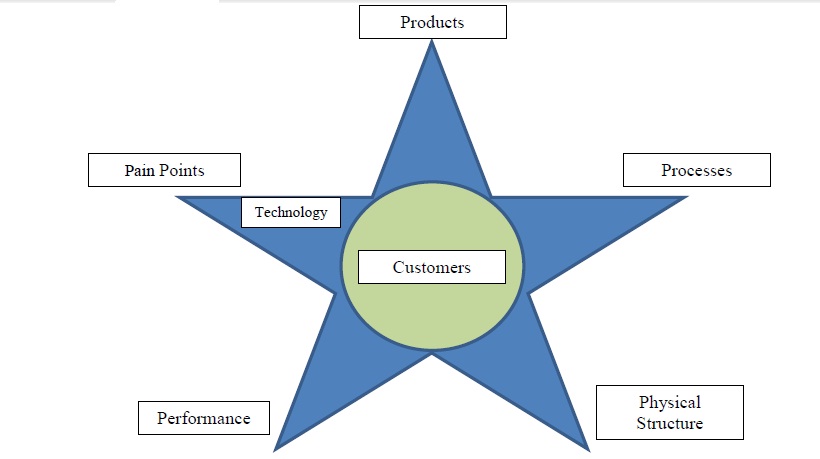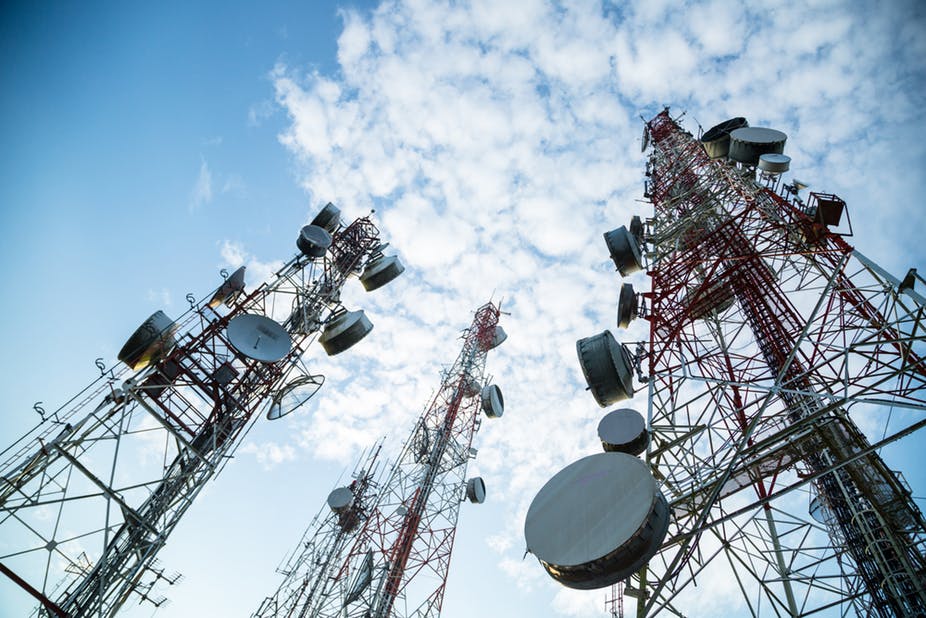Telecommunication Industry
Spurned by the explosion of the internet, the ever-increasing need for faster multimedia information transmission has created a large demand for expansive cable networks. The telecom industry, as stated before, is built upon a range of cable technologies, but due to the increasing size and speed requirements, local telecom networks are being forced to upgrade in order to support advanced signal processes. Using the 5P Framework for Teaching and Characterizing Supply Chain Effectively shown in Figure 6 below we are able to see a clearer picture of what takes place within this industry

Figure 6: 5P Framework for teaching and characterizing supply chains effectively
Customers
With each passing month the dependence on internet access with regards to business transactions is becoming more evident. The major volume of the customers in this industry are from residential users. However the focus of major Internet Service Providers (ISP) over the past decade has been to expand their business to business enterprises. Due to the saturation of the basic consumer market, growth in this industry is extremely reliant on business to business customers.When basic consumers require internet service, it can be installed typically within a week’s time frame due to the expansive hub network already established in their neighborhood or housing development. This is not necessarily the case for most businesses, which now essentially require internet products for business transactions. This new business model requires extensive construction to place new fiber network cabling to previously unserviceable buildings. Furthermore, businesses often require much higher levels of bandwidth in order to keep their businesses running. Hospitals, law firms, corporate buildings, colleges and call centers require incredibly large fiber optic networks in order to grow their business.
Products
Although these internet providers develop a networking solution product, they should be actually viewed as a service company. With this in mind as well as the rapid expansion in technology, these product solutions have an incredibly short life cycle if they are not designed appropriately enough. The physical product must be developed to withstand multiple soft upgrades while maintaining the same technology.The lead times to bring these products can vary depending on what the customer has asked for and the amount of construction necessary to provide service. Once a customer has the necessary components and equipment installed for service these highly innovative products can produce an incredible margin as the sunk cost in the service occurs upfront. Not only are these businesses reliant on secure dedicated internet access, but often require secure Ethernet Private Lines (EPL) which tie each of their corporate locations together, creating a network for their business. This creates an incredible demand for millions of feet of cable to complete. The construction necessary for such solutions can run in to the tens of thousands of dollars for each customer, all of which is typically covered by the ISP due to the eventual return on investment over the term of the contract.
Pain Points
Although the fiber optic network is extremely adaptable to many product suites, the continual advancement of technology in the telecommunications industry provide potential pain points with regards to product lifecycle. Each year this technology is being pushed further for efficiency and speed over a physical network that was installed in previous years at a premium cost. The product lifecycle solution is often very short, requiring upgrades. In order to reduce the issue of replacing the physical network each year, companies must invest and construct a network in which they are confident can handle traffic well beyond the current demands. This incredibly large initial capital investment provides a large barrier of entry to the industry. Other issues that ISPs encounter run in parallel with standard utility companies when it comes to major weather patterns. Due to the part of the physical layer of the fiber network being strung along power poles, devastating storms may carry the potential to bring down power lines, often damaging localized fiber optic lines; analyzing and predicting weather patterns in order to restore fiber optic service is of great concern to ISPs.
Performance Measures
In order for these connections to occur, however, an extensive network of fiber optic cable needs to be laid in a timely manner. The ISP in this study maintains internal due date metrics which are used to track the efficiency of bringing an order to service. The goal of these due dates is to reduce the interval between contracts being signed with a customer to the date service is delivered. The due date intervals vary between 30 to 90 days depending on the geographical location of the order and the amount of construction, or kilometer of fiber required to bring service to that customer. As the business ramps up to keep the actual time table below these due date intervals, each part of the business must be running as efficiently as possible. Fiber procurement is a major factor in completing the work necessary in a timely manner. If the proper cable is not on hand for construction, splicing or installation, major operational delays will occur.
Physical Structure
The physical structure in this industry includes not only the network footprint of each ISP but also the warehouses, distribution network and multiple players that ensure a speedy and reliable product. All internet providers must maintain warehouses which house not only modems and switch equipment but also the physical network cabling that is required for construction to bring service to their customers. These warehouses are typically established in cities, allowing a central location point for technicians and construction workers to pick up necessary materials daily. It is worth noting that that since their inception in the late 1970’s, transmission line speeds have increased on an order of magnitude, today these transmission lines can handle hundreds of terabytes of data per second . It is with this reasoning that there is a monumental paradigm shift in global communication towards the use of fiber optic cabling, creating a larger demand for an upgraded physical layer of the network. ISP customers are demanding lighting fast speeds and companies are responding. Verizon is now offering its 500Mbps download speeds for their FiOS product subscribers, while Time Warner Cable Business Class can provide DIA lines ranging from 3 to 10Gbps . Figure 7 below provides a basic representation of a Hub and Spoke Fiber Network. This network is connected through an array of physical hubs and switches which all must be connected through the physical layer of fiber optic cabling. This figure demonstrates how a central campus site can be networked with private ethernet lines to subsidiary branches. These branches will be spliced with local hubs in the neighborhood with fiber optic cabling. From there these hubs will connect to a central node of which can be accessed through a private IP address for that company.

Figure 7: Ethernet hub and spoke network with DIA and VPN
Processes
As shown in Figure 8 below, there are many players in the Telecom industry. The industry process map provided in Figure 8 shows which players are involved in which stage of the industry process.

Figure 8: High level supply chain model of processes telecommunications Industry

